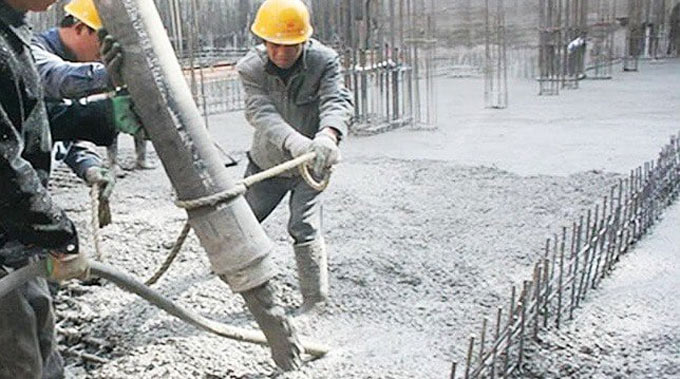
Benefits of using Antifreeze Admixtures for Concrete throughout Cold Weather Concreting
Freezing leads to reduction of concrete strength by 20 to 40 % when fresh concrete experiences freezing. To get rid of this issue, antifreeze admixtures of concrete should be used. Given below, the properties and applications of antifreeze admistures in cold weather concreting :-
The resistance capacity of the fresh concrete against the freeze and thaw cycle is impacted by the stability factor which is also reduced by 40 to 60%. There is 70% reduction in the bond among the reinforcement and the concrete that is generally cured.
Therefore, it is very crucial to check that the concrete will not experience freezing in its plastic state throughout the concreting in cold weather conditions.
There are two procedures for executing concreting in cold weather:
Arrangement of normal ambient temperature for the concrete. It is performed through the heating of the concrete constituents or supplying heating enclosures.
The inclusion of chemical admixtures
Traditional Chemical Admixtures in Cold Weather Concrete
Traditional concrete applies calcium chloride as expediting admixtures to neutralize the retarding effects of slow hydration of concrete in low temperatures. This admixture is not suitable lower than the freezing temperatures.
It is found to be a shortcoming in the traditional form of admixtures. So, for arctic weather conditions, special admixtures like antifreeze admixtures play an important role.
Antifreeze Admixtures for Concrete
The physical condition of the mix water utilized in the concreting, is influenced by the antifreeze admixtures. These can slow down the freezing point of the water considerably and is applied in temperatures less than -30 degrees Celsius. It can allow the extension of the period of the construction activity.
Chemical Composition and Action of Antifreeze Admixtures
There exist the following two groups of antifreeze admixtures which arrange the characteristics of antifreeze and the expedited setting and hardening properties.
1. First Group: These comprise of chemicals, weak electrolytes, sodium nitrite, sodium chloride and non-electrolytic organic compounds which reduce the freezing point of the water applied in the concrete. But these group perform as weak accelerators to improve the setting and hardening.
2. Second Group: These include binary as well as ternary admixtures which contains potash and additives based on calcium chloride, sodium nitrite, calcium chloride with sodium nitrite, calcium nitrite -nitrate-urea and other chemicals.
These contain strong antifreeze properties and expedited property to improve the setting and hardening. These are applied in greater dosages relating to that of traditional admixtures.
One such instance is the application of 8% of sodium nitrite to retain the liquid at a temperature of -15-degree Celsius. These admixtures perform by reducing the liquid phase freezing point and by speeding up the cement hydration at the freezing temperatures.
Depending on the dosage in the mixture, the non-chloride admixture allows the mix (concrete or the mortar) to be set at sub-freezing temperatures. It results in minimizing the requirement of protective measures necessary throughout the cold weathering works.
The method makes the quality of the concrete superior and since it allows early setting, premature stripping of formworks is also accomplished. It leads to reprocessing of the form within a short time and therefore accelerates the construction process.
In the following table, you can view the major variation in strength gain at 3, 7 and 28 days for plain concrete and antifreeze admixture used concrete.
The other admixtures with superplasticizers can also be combined with the antifreeze admixtures to reduce the quantity of water.
With the curtailment of water, the freezable free water content in the mix will also be reduced. This freezable water content is the one that functions as the heat sink for the heat generated by the preliminary hydration reactions. It will also minimize the number of antifreeze admixtures.
To get more detail, go through the following link engineersdaily.com


